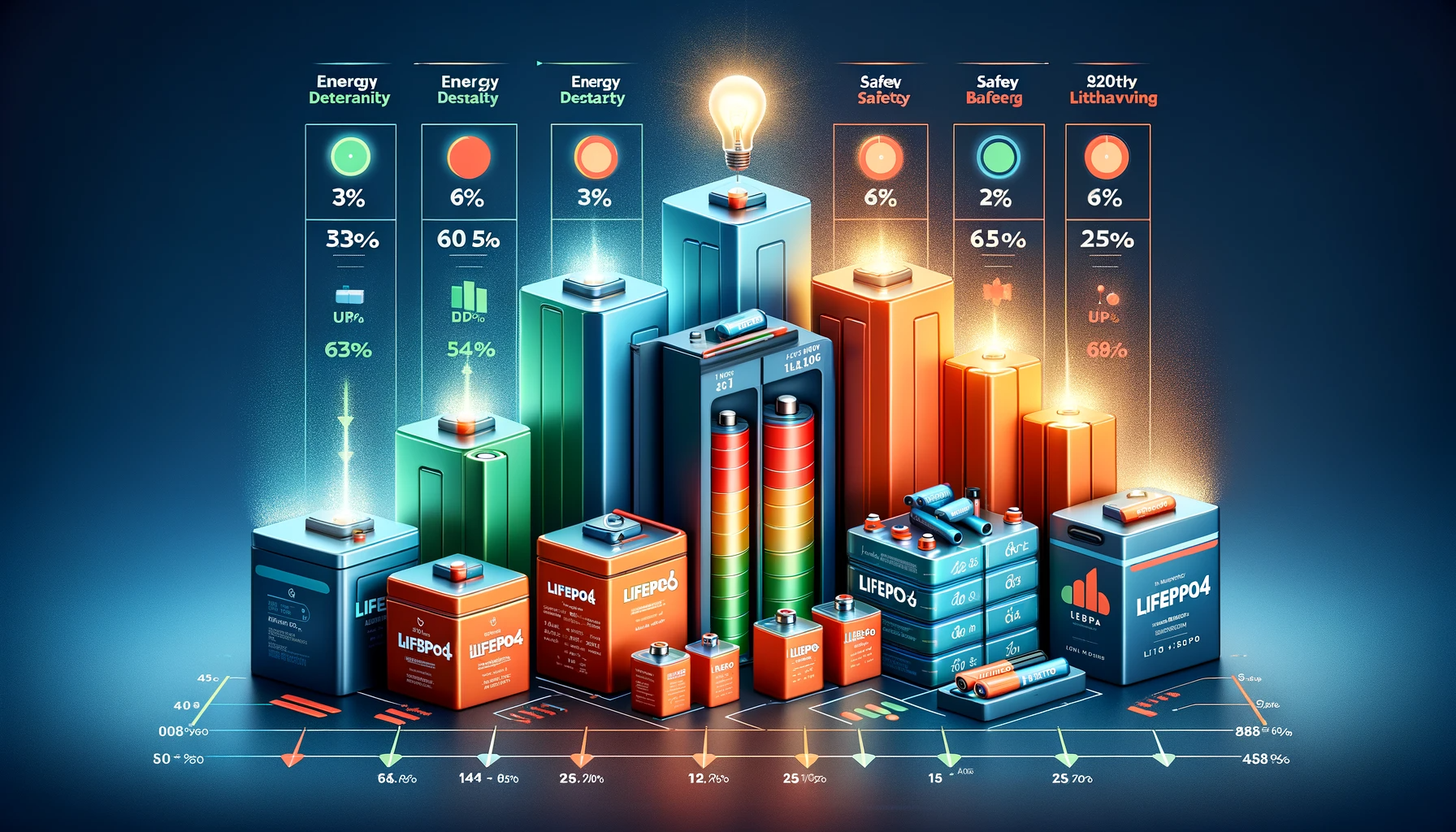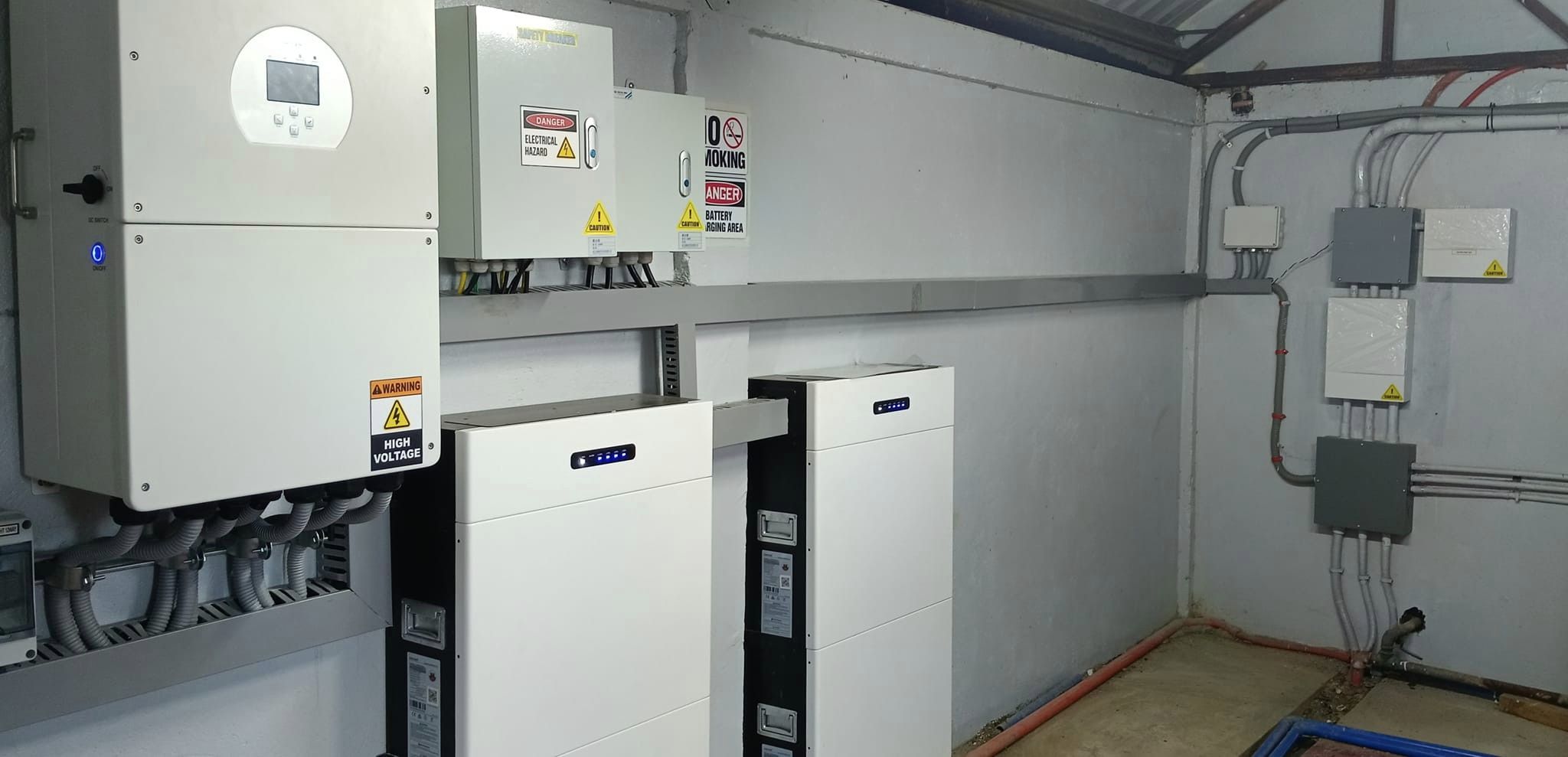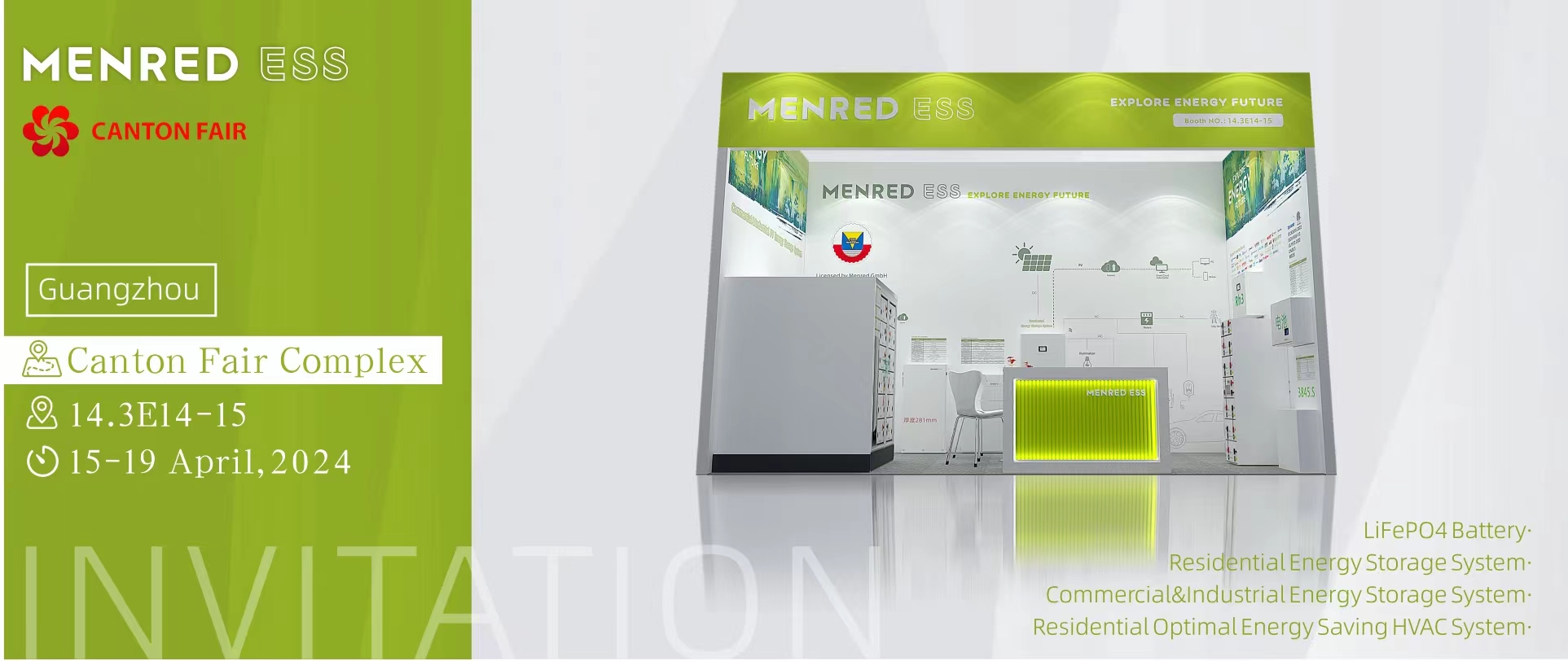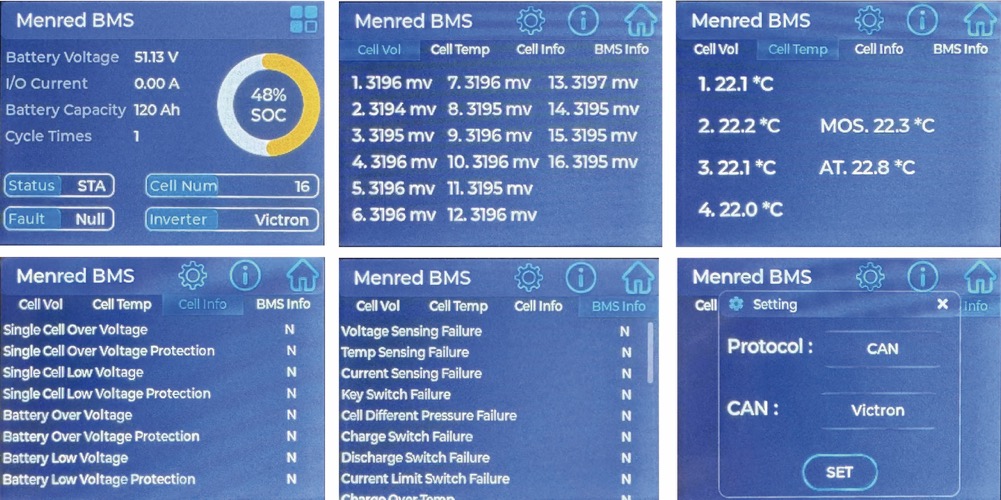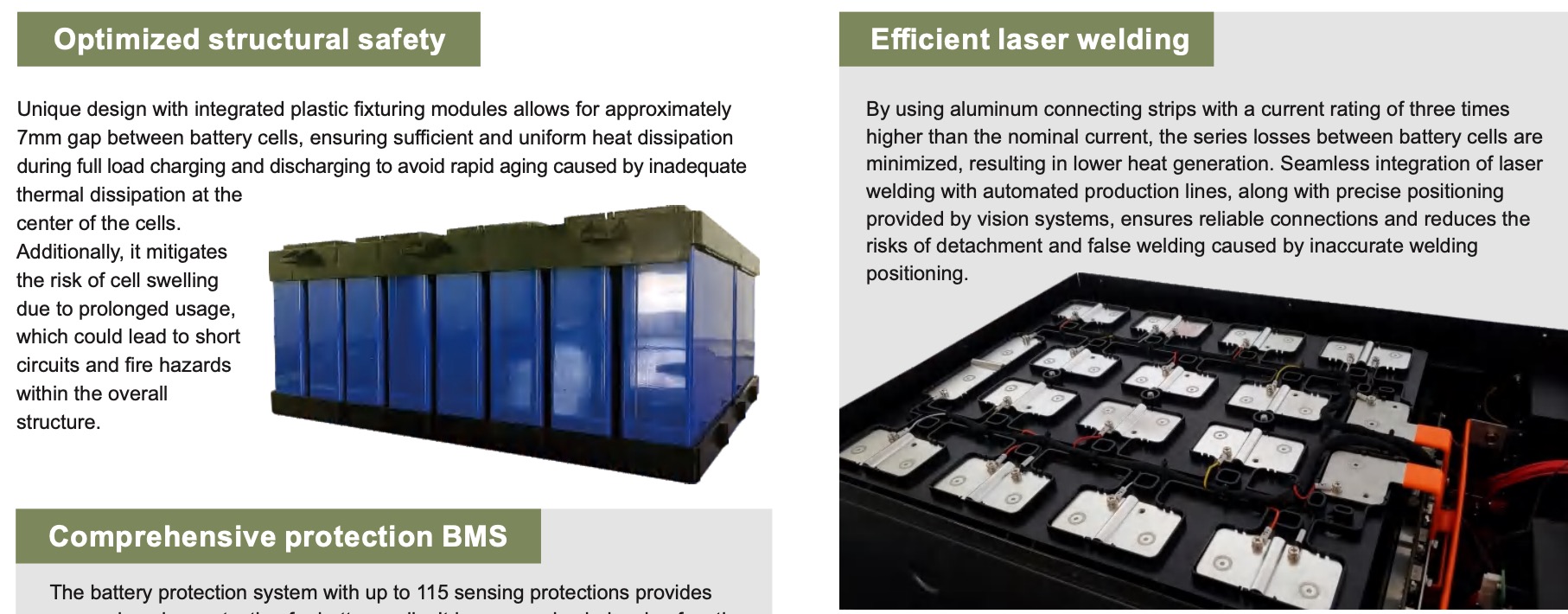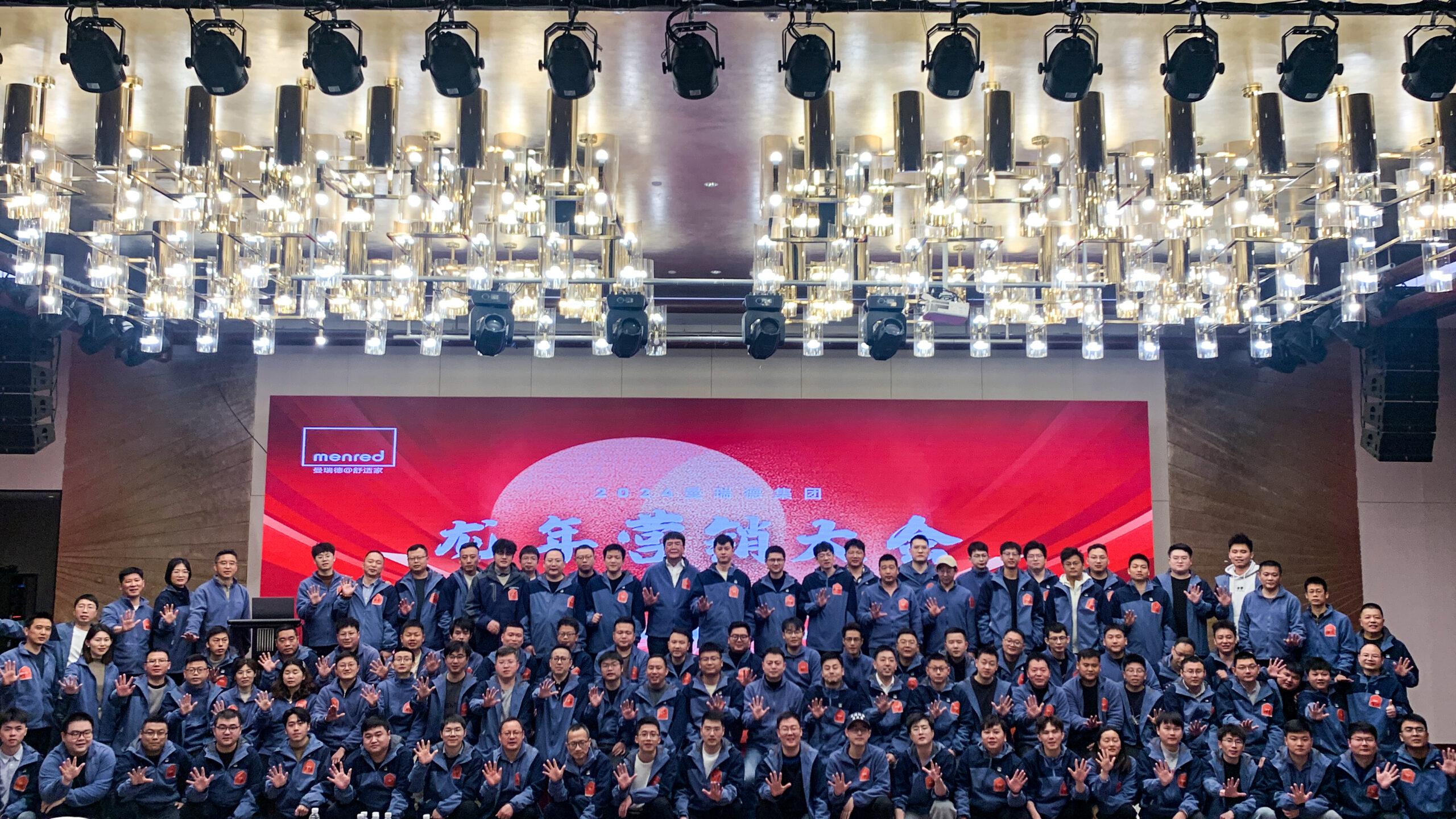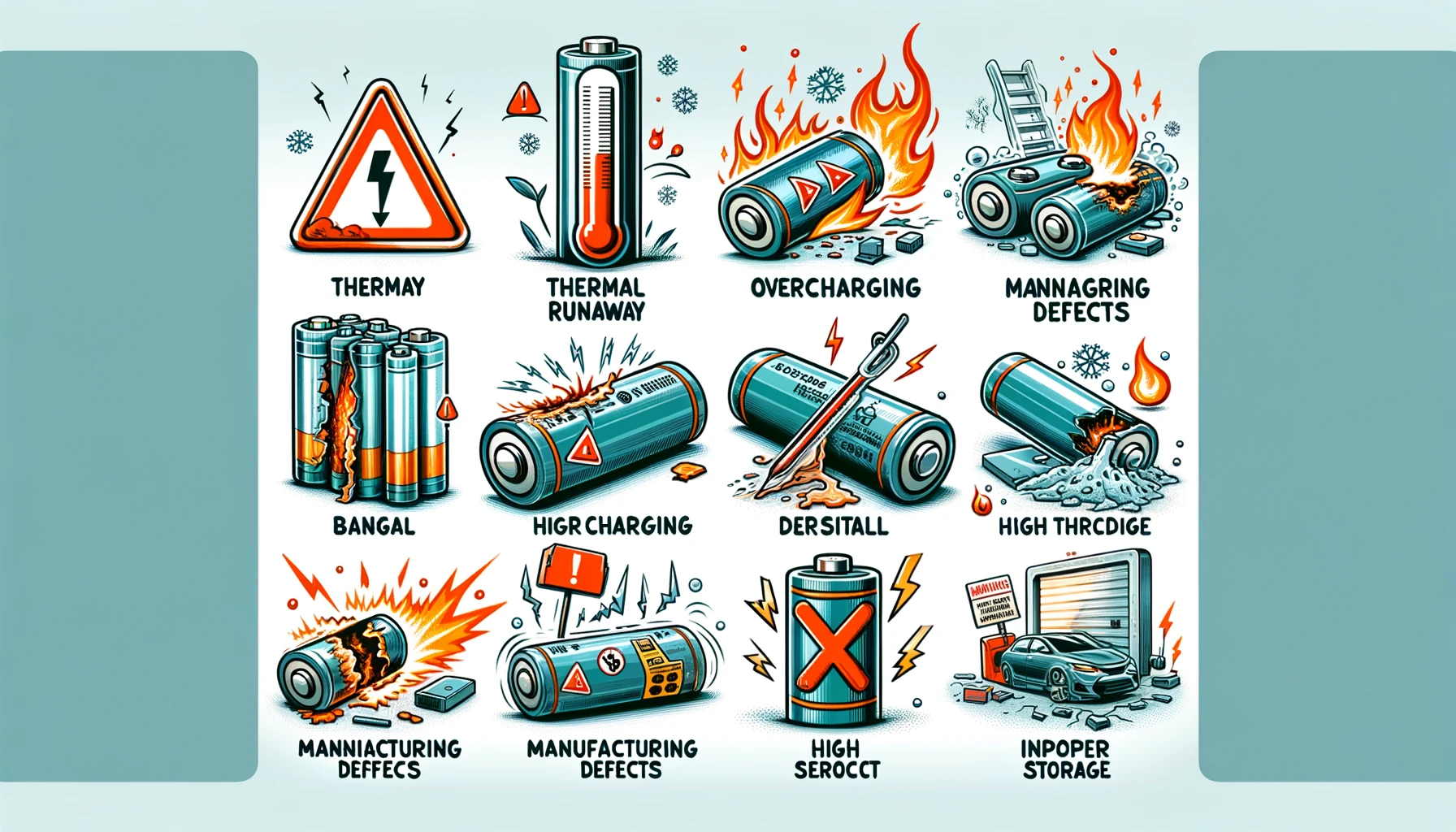How Long Do LiFePO4 Batteries Last?
LiFePO4 batteries, known for their exceptional longevity, typically offer between 2000 to 6000 charge cycles. MENRED ESS ‘s LFP.6144.W/LFP.6144.G all adopt 6000 cycles of A-grade battery cell, and can reach 1C charging and discharging, This translates to around 5-15 years of service life, assuming daily charging and discharging. The extended lifespan of LiFePO4 batteries is attributed to the stable lithium iron phosphate chemistry, which endures less stress during charge and discharge cycles compared to other lithium-ion batteries. The durability of these batteries makes them cost-effective over time, despite their initial higher cost. Users can further enhance their lifespan by maintaining optimal charging habits, avoiding deep discharges, and keeping them in temperature-controlled environments. These characteristics make LiFePO4 batteries an ideal choice for applications requiring long-term, reliable power sources, such as solar energy storage systems, electric vehicles, and portable power solutions. Their ability to withstand frequent cycling without significant degradation is a key factor driving their growing popularity in both consumer and industrial markets.Advantages of LiFePO4 Batteries Over Other Lithium Batteries?
LiFePO4 batteries stand out in the lithium battery family for their unique combination of safety, longevity, and environmental friendliness. One of their primary advantages is thermal stability, which significantly reduces the risk of overheating and thermal runaway, common concerns in standard lithium-ion batteries. This feature enhances their safety profile, making them suitable for applications where safety is a paramount concern, such as in electric vehicles and home energy storage systems. Additionally, LiFePO4 batteries offer a longer lifespan, often double or triple that of standard lithium-ion batteries, due to the stability and robustness of the lithium iron phosphate cathode. Their longer lifespan means fewer replacements and lower long-term costs. Environmentally, LiFePO4 batteries are less harmful. They do not contain cobalt, a toxic and expensive material found in many lithium-ion batteries, making them a more sustainable and ethical choice. Their high discharge rate capability also makes them suitable for high-power applications. All these attributes combined make LiFePO4 batteries a superior, cost-effective, and environmentally responsible choice for a wide range of applications.Safety of LiFePO4 Batteries: Are They Prone to Overheating or Explosion?
The safety of LiFePO4 batteries is one of their most significant advantages. Unlike traditional lithium-ion batteries, which can be prone to overheating and thermal runaway, LiFePO4 batteries are inherently safer due to their stable chemical composition. The lithium iron phosphate chemistry of these batteries provides a more stable structure that can withstand high temperatures without decomposing, reducing the risk of fire or explosion. This makes them a preferred choice in applications where safety is crucial, such as in electric vehicles, residential energy storage, and portable electronic devices. Furthermore, LiFePO4 batteries have a lower risk of leaking or venting flammable gases. They are also more resistant to overcharging, short-circuiting, and deep discharging, common causes of battery failures. This robust safety profile is a key reason for their growing adoption in industries where battery safety is a top priority. Despite their safety features, it’s still important to use LiFePO4 batteries with appropriate charging and discharging controls, as with any battery technology, to ensure optimal performance and longevity.Maintenance and Care for LiFePO4 Batteries: What to Keep in Mind?
Maintaining and caring for LiFePO4 batteries is relatively straightforward, thanks to their stable chemistry and robustness. However, there are some best practices to ensure their longevity. Firstly, avoid deep discharges; consistently discharging batteries to very low levels can shorten their lifespan. It’s advisable to recharge them before they drop below 20% capacity. Also, avoid overcharging the batteries, as keeping them at full charge for extended periods can strain the cells. Using a smart charger that stops charging once the battery is full can help prevent this. Storing LiFePO4 batteries in a cool, dry place is essential, as extreme temperatures can affect their performance and durability. If the batteries are to be stored for long periods, it’s recommended to store them at around 50% charge to maintain their health. Regularly inspecting the batteries for physical damage or swelling can prevent potential issues. With these simple maintenance steps, LiFePO4 batteries can provide reliable performance over their extended lifespan.Performance of LiFePO4 Batteries in Extreme Climate Conditions:
LiFePO4 batteries are known for their robust performance in a range of climate conditions, making them suitable for various applications. They operate effectively in temperatures as low as -20°C and as high as 60°C. (MENRED ESS’s LiFePO4 battery Battery discharge:-10°C to +50°C, Battery Charge: 0°C to +50°C) However, extreme temperatures can affect their efficiency and lifespan. In cold conditions, LiFePO4 batteries may experience reduced capacity and slower chemical reactions within the cells, leading to decreased performance. To mitigate this, it’s advisable to insulate or heat the battery in very cold environments. In contrast, high temperatures can accelerate aging in the battery cells, but LiFePO4 batteries are more resistant to heat-related degradation compared to other lithium-ion batteries. This thermal stability is a significant advantage, particularly for applications exposed to fluctuating or extreme temperatures, like outdoor energy storage systems or electric vehicles. Users should still avoid exposing these batteries to unnecessarily high temperatures to maximize their lifespan. Overall, the ability of LiFePO4 batteries to withstand diverse environmental conditions, combined with their safety profile, makes them a versatile and reliable choice for many applications.Charging Time for LiFePO4 Batteries:
The charging time for LiFePO4 batteries varies based on their capacity and the power output of the charger used. Generally, these batteries can be charged faster than other types of lithium-ion batteries due to their ability to accept higher charge currents. A standard charger can typically charge a LiFePO4 battery from empty to full in about 3 to 7 hours. For example, a 100Ah LiFePO4 battery with a standard 20A charger would take approximately 5 hours to charge fully. Often depending on the LiFePO4 cell, MENRED ESS’s LiFePO4 battery uses a cell that can be filled in 1 hour and discharged in 1 hour. This facilitates the investment of the whole system. Fast charging options are available that can reduce this time significantly, but it’s important to use a charger that’s specifically designed for LiFePO4 batteries to ensure safety and battery health. Overcharging can reduce the battery’s lifespan, so a charger with an automatic shut-off feature or a built-in battery management system (BMS) is recommended. This ensures the batteries are not charged beyond their capacity, maintaining their efficiency and longevity.Applications of LiFePO4 Batteries: Where Are They Commonly Used?
LiFePO4 batteries are increasingly popular in various applications due to their safety, longevity, and high-power output. They are widely used in electric vehicles (EVs), where their stability and long life make them ideal for frequent charging and discharging. In the renewable energy sector, LiFePO4 batteries are a top choice for solar energy storage systems, storing solar power for use during non-sunny periods. They are also prevalent in marine applications, providing safe, reliable power for boats and marine equipment. Recreational vehicles (RVs) and camping gear often use these batteries for their lightweight and long-lasting power supply. Additionally, they are used in portable power stations, UPS systems, and emergency lighting, where reliable and safe power is critical. The versatility and robustness of LiFePO4 batteries make them suitable for both domestic and industrial applications, meeting the growing demand for efficient and sustainable energy storage solutions.Cost Comparison of LiFePO4 Batteries With Other Battery Types:
While the initial purchase cost of LiFePO4 batteries is higher compared to other lithium-ion batteries, their long-term economic benefits often outweigh the upfront expense. The extended lifespan of LiFePO4 batteries, typically offering thousands of charge cycles, means fewer replacements over time, translating to cost savings in the long run. Additionally, their low maintenance requirements and high reliability further reduce total ownership costs. The cost per kilowatt-hour (kWh) over the battery’s life is often lower for LiFePO4 batteries when compared to other types. This makes them a cost-effective solution for applications requiring long-term, reliable energy storage, such as in solar energy systems and electric vehicles. As technology advances and production scales, the costs of LiFePO4 batteries continue to decrease, making them increasingly competitive and accessible for a broader range of users and applications.Recycling and Disposal of LiFePO4 Batteries:
The recycling and disposal process for LiFePO4 batteries is an essential aspect of their lifecycle, especially considering environmental sustainability. Unlike some other battery types, LiFePO4 batteries contain no toxic heavy metals like cadmium or lead, making them more environmentally friendly. However, proper disposal and recycling are still crucial.
When a LiFePO4 battery reaches the end of its life, it should not be simply thrown away with regular waste. Instead, these batteries should be taken to a certified battery recycling center. At these facilities, the batteries are first safely discharged. Following discharge, the batteries are typically shredded or crushed, allowing for the separation of valuable materials.
The recycling process involves extracting various metals, including iron, phosphate, and sometimes lithium. These materials can then be reused in new batteries or other products, reducing the need for virgin materials and minimizing the environmental impact. The plastics and other non-metallic substances found in the batteries are often recycled separately.
One of the challenges in recycling LiFePO4 batteries is the economic viability. The value of the recovered materials, especially considering the relatively low lithium content compared to other lithium-ion batteries, might not always cover the recycling process’s costs. This economic challenge is an area of ongoing research and development, aiming to make battery recycling more efficient and less costly.
Efforts are also underway to improve the design of LiFePO4 batteries to make them more recyclable. These include designing for disassembly and exploring new methods to recover and reuse more of the battery materials. As battery technology evolves, so too will the methods for recycling, with an aim to further reduce the environmental footprint of these batteries.
Energy Density of LiFePO4 Batteries Compared to Other Lithium Batteries:
In terms of energy density, LiFePO4 batteries generally have a lower energy density compared to other lithium-ion batteries. Energy density, which refers to the amount of energy a battery can store relative to its weight or volume, is a crucial factor in many applications, especially where size and weight are significant considerations.
Typically, LiFePO4 batteries offer an energy density in the range of 90-120 Wh/kg, whereas other lithium-ion batteries, such as those using lithium cobalt oxide or lithium manganese oxide, can reach energy densities of 150-200 Wh/kg or more. This means that for the same energy storage capacity, LiFePO4 batteries tend to be larger and heavier.
However, this lower energy density is often offset by several advantages of LiFePO4 batteries. These include a longer lifespan, greater thermal stability, and higher safety levels. The batteries can also deliver high discharge currents, making them well-suited for applications where burst power is more critical than compact size or light weight, such as in electric vehicles or stationary energy storage systems.
Another aspect to consider is the volumetric energy density, which relates to the amount of space the battery occupies. LiFePO4 batteries can be more compact in this respect, allowing more flexible design options for battery packs. This is particularly beneficial in applications where the shape and size of the battery pack can be tailored to fit specific spaces.
In conclusion, while LiFePO4 batteries may not match the energy density of other lithium-ion batteries, their unique combination of safety, durability, and high-power output makes them a preferred choice for many applications. Ongoing research and development in battery technology continue to enhance their energy density, further expanding their range of potential uses.
Environmental Impact of LiFePO4 Batteries:
The environmental impact of LiFePO4 (lithium iron phosphate) batteries is significantly less detrimental compared to many other types of batteries, particularly due to their composition and lifecycle. LiFePO4 batteries are known for their use of phosphate-based cathode materials, which are more environmentally benign than the cobalt- or nickel-based cathodes used in other lithium-ion batteries.
One of the key environmental benefits of LiFePO4 batteries is the absence of heavy metals and rare earth elements in their composition. Traditional lithium-ion batteries often contain cobalt, a metal associated with environmental and ethical concerns, including mining practices that can be damaging to ecosystems and involve exploitative labor conditions. LiFePO4 batteries, on the other hand, use iron and phosphate, which are more abundant and have a lower environmental footprint in terms of extraction and processing.
Furthermore, the long lifespan of LiFePO4 batteries contributes to their eco-friendly profile. Their ability to withstand thousands of charge cycles without significant degradation reduces the frequency of battery replacement and, consequently, the associated environmental impact of manufacturing, transportation, and disposal.
When it comes to disposal, LiFePO4 batteries are less hazardous and are recyclable. Although the recycling processes for lithium-ion batteries are still developing and can be costly, the ability to reclaim materials like iron, phosphate, and lithium from spent LiFePO4 batteries is a critical step towards sustainable battery use. Efforts are underway to improve recycling technologies and make the process more economically viable, which will further enhance the environmental benefits of these batteries.
In conclusion, the environmental impact of LiFePO4 batteries is comparatively lower than many other battery types. Their safer chemical composition, longer lifespan, and recyclability make them a more sustainable choice for a variety of applications, aligning with the growing global emphasis on environmental responsibility and sustainable development.
